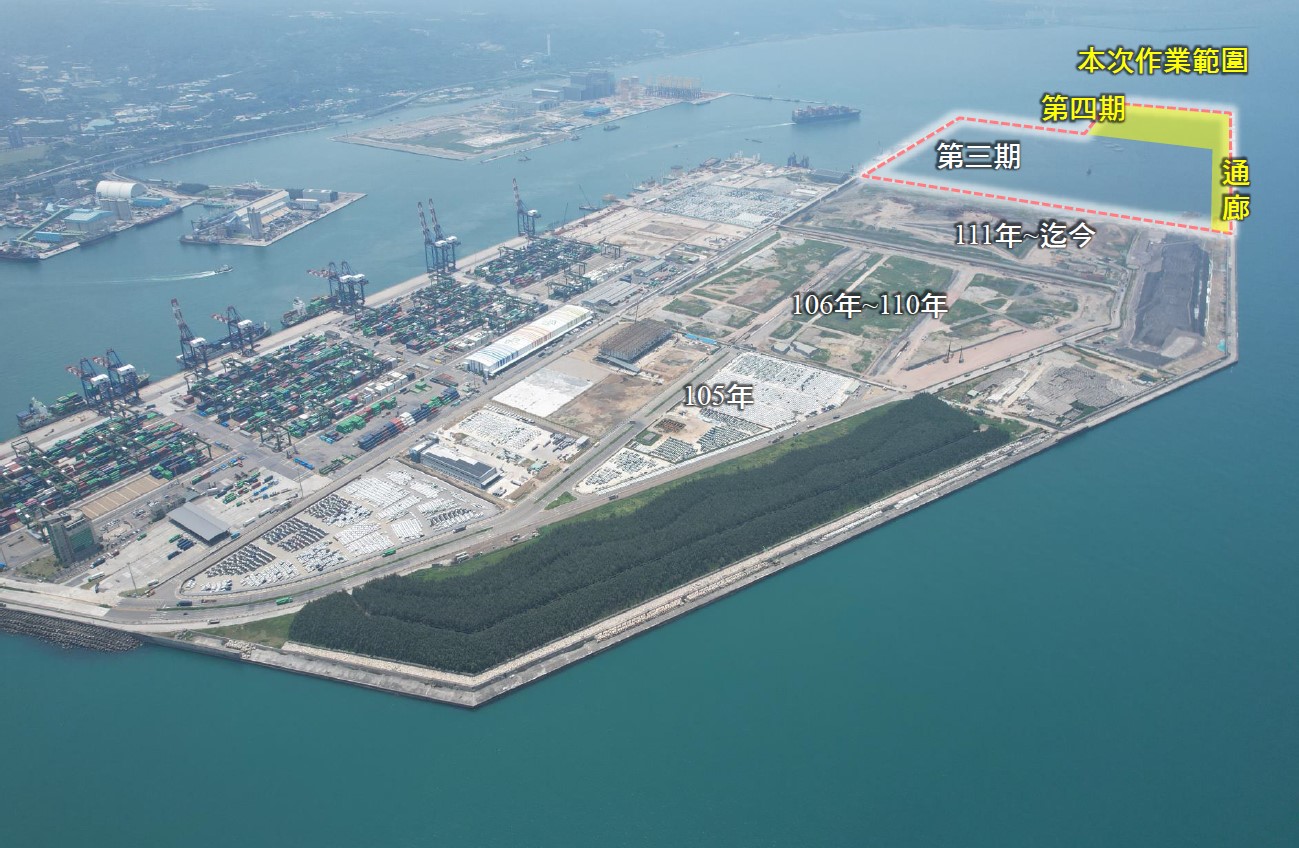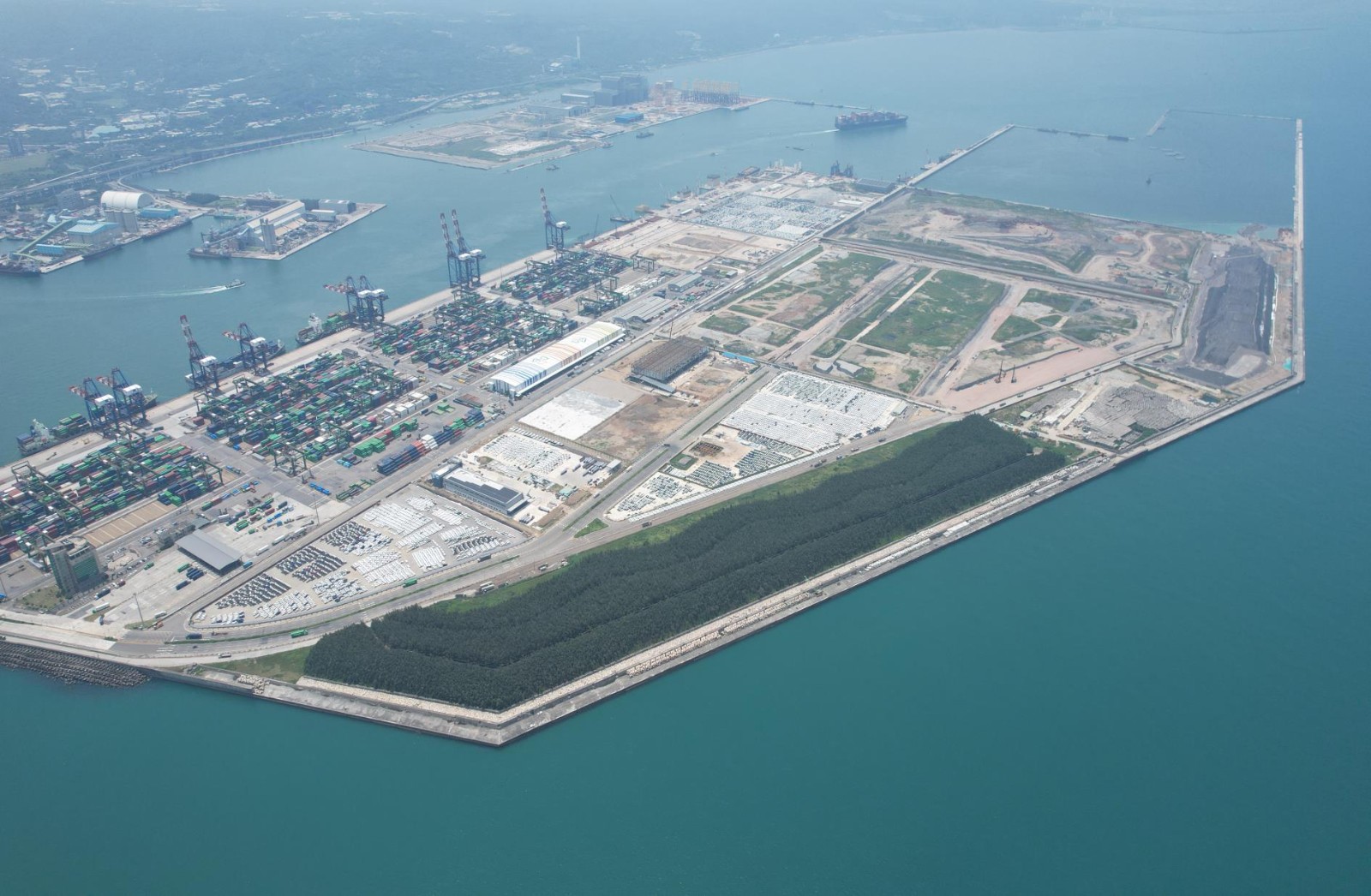Project location: Bali Dist., New Taipei City
Contract value: $445,000,000 TWD
Contract duration: 36 mouths
Scheduled Commencement date: 2025-04-01
Proprietor: Port of Keelung.Taiwan International Ports Corporation,Ltd.
Design and Supervision: Port of Keelung.Taiwan International Ports Corporation,Ltd.
Service Provider: Earth Power Construction Co., Ltd. (Lead Contractor), WELL MEET TECHNOLOGY CO., LTD.
Tender Title: The Execution Management and Leveling Engineering of Public Construction Surpluse Reusing for the three and four Phase of Land Reclamation Project at Logistic and Warehousing area In Taipei Port
Taipei Port, located on the south bank of the Tamsui River estuary at the northern tip of Taiwan, is situated in a sea area with relatively mild marine meteorological conditions, including wind, currents, waves, and tidal ranges. Its flat seabed and moderate water depth make it a suitable location for developing large-scale harbors. The Keelung Harbor Branch of Taiwan International Ports Corporation (TIPC), in accordance with the “Future Development and Construction Plan for Taiwan International Commercial Ports (2024-2026)” approved by the Executive Yuan, is undertaking the exchange of excavated materials from construction surplus for the Phase III access corridor and Phase IV land creation projects. This aims to expedite land reclamation for use as a logistics and warehousing area, thereby enhancing the development of Taipei Port.
▼Scope of Services

The dike-enclosed water area of the logistics and warehousing zone covers approximately 339.2 hectares and can accommodate approximately 73.25 million cubic meters of excavated soil and converter slag. Development is carried out in phases and zones. First, seawalls are constructed to create enclosed water areas, followed by land reclamation using mainly excavated surplus soil from northern Taiwan construction projects and dredged material from reservoirs and river channels.
Our team has been managing the excavated soil acceptance and control within the project area since 2016. The highest single-day vehicle count was 1,505 trucks, and the highest single-day soil acceptance volume was 18,206.96 m³. The management process is fully electronic, reducing application procedures for excavated soil removal projects and minimizing the time spent on manual vehicle data control. Currently, the Phase I and Phase II areas of the logistics and warehousing zone have completed excavated soil exchange control and leveling operations. The accepted soil is currently stockpiled in the southern area of Phase II-2 (approximately 6 million cubic meters) and used for filling the Phase III access corridor. This service scope covers Phases III and IV of the Taipei Port logistics and warehousing zone. Due to the subsequent need for oil tank construction in Phase IV, after the Phase III access corridor is completed, soil acceptance will continue, with filling progressing from the outer side to the inner side of Phase IV. Once filling is complete, the area will be available for the relocation and construction of oil tanks.
To accelerate the land reclamation progress, all records related to incoming soil identity management and soil quality management are handled by a management system. Since April 2016, our team has managed excavated soil acceptance within the project. By the end of September 2024, approximately 27.92 million cubic meters of fill had been completed. Over the years, the application platform for excavated soil vehicle data and the information management system for excavated soil exchange control have been continuously improved and are now actively used in the project. Our team uses technological management measures, and the fully integrated system has been successfully applied to this project, reducing preparation time and improving excavated soil exchange efficiency.
Upon completion of this service, the following goals and benefits are expected:
1. Developing soil acceptance capacity and increasing national land area.
2. Constructing port development infrastructure and enhancing port competitiveness.
3. Promoting national industrial innovation and regional development, achieving the goal of port and city co-prosperity.




